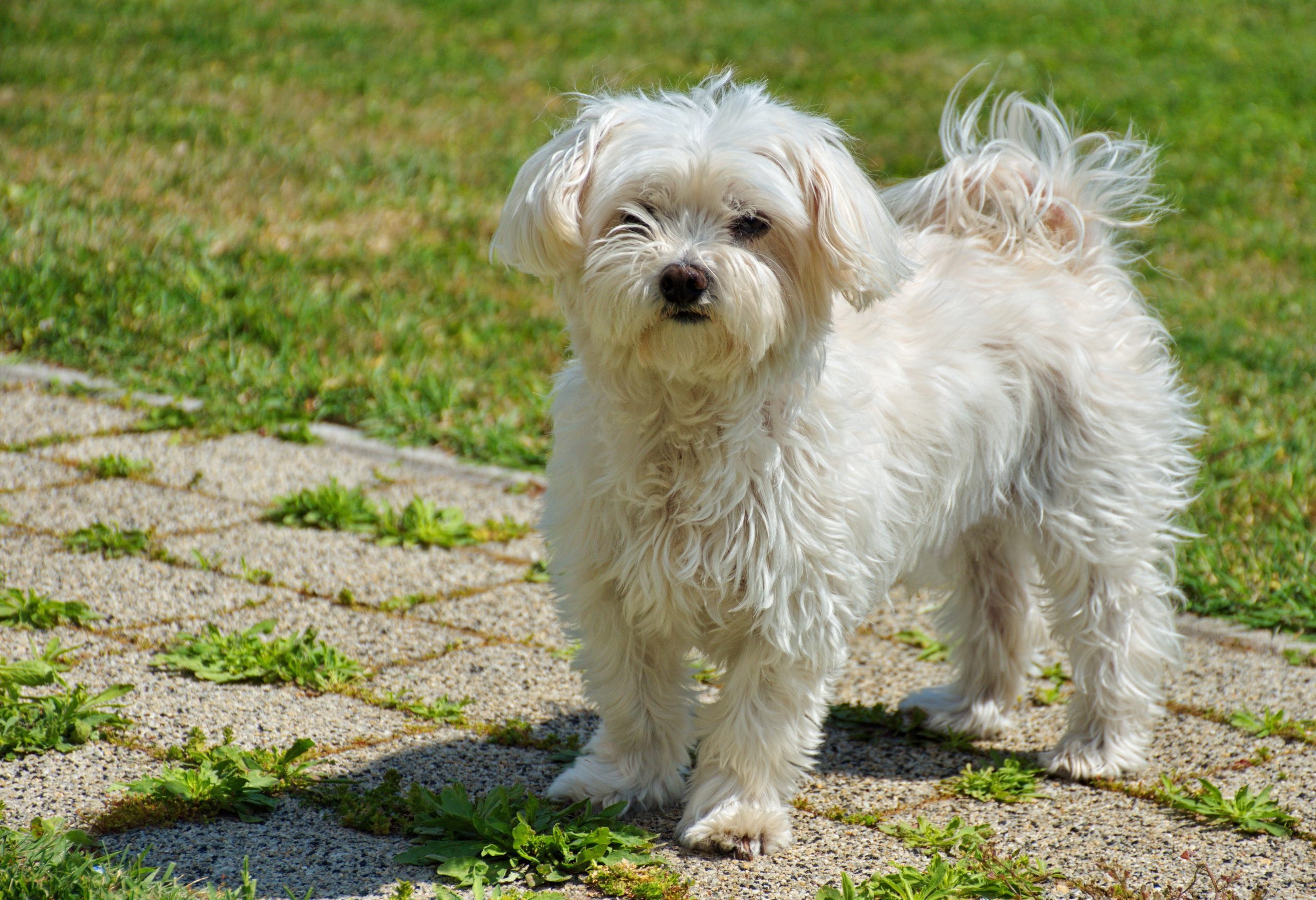Welcome to the Pet Breed Hub, where today we’re diving tail-first into the world of the Maltese dog. These puffballs of joy are more than just a pretty face; they’re packed with personality, affection, and a history that’s as rich as their silky coats. Let’s uncover the secrets behind these adorable companions.
Maltese Dog at a Glance
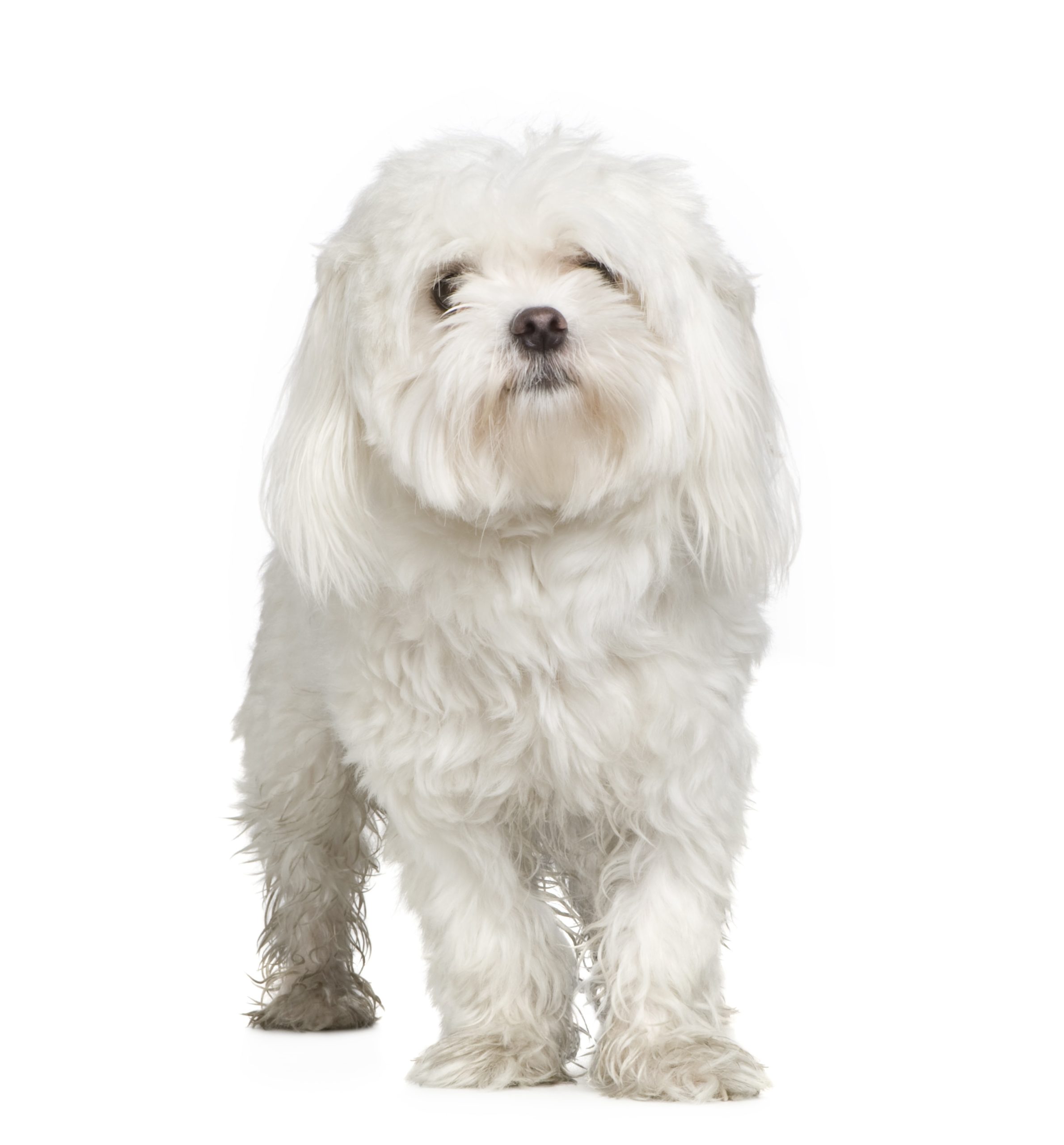
| Characteristic | Detail |
|---|---|
| Scientific Name | Canis lupus familiaris |
| Origin | Central Mediterranean Area |
| Size | Small (up to 7 pounds or 3 kg) |
| Coat | Long, silky, white |
| Lifespan | 12-15 years |
| Temperament | Affectionate, playful, and alert |
| Activity Level | Moderate; enjoys walks and playtime |
| Health | Generally healthy; watch for dental issues, patellar luxation |
| Grooming Needs | High; daily brushing, regular grooming sessions |
| Suitable For | Families, singles, seniors, apartment living |
Origin
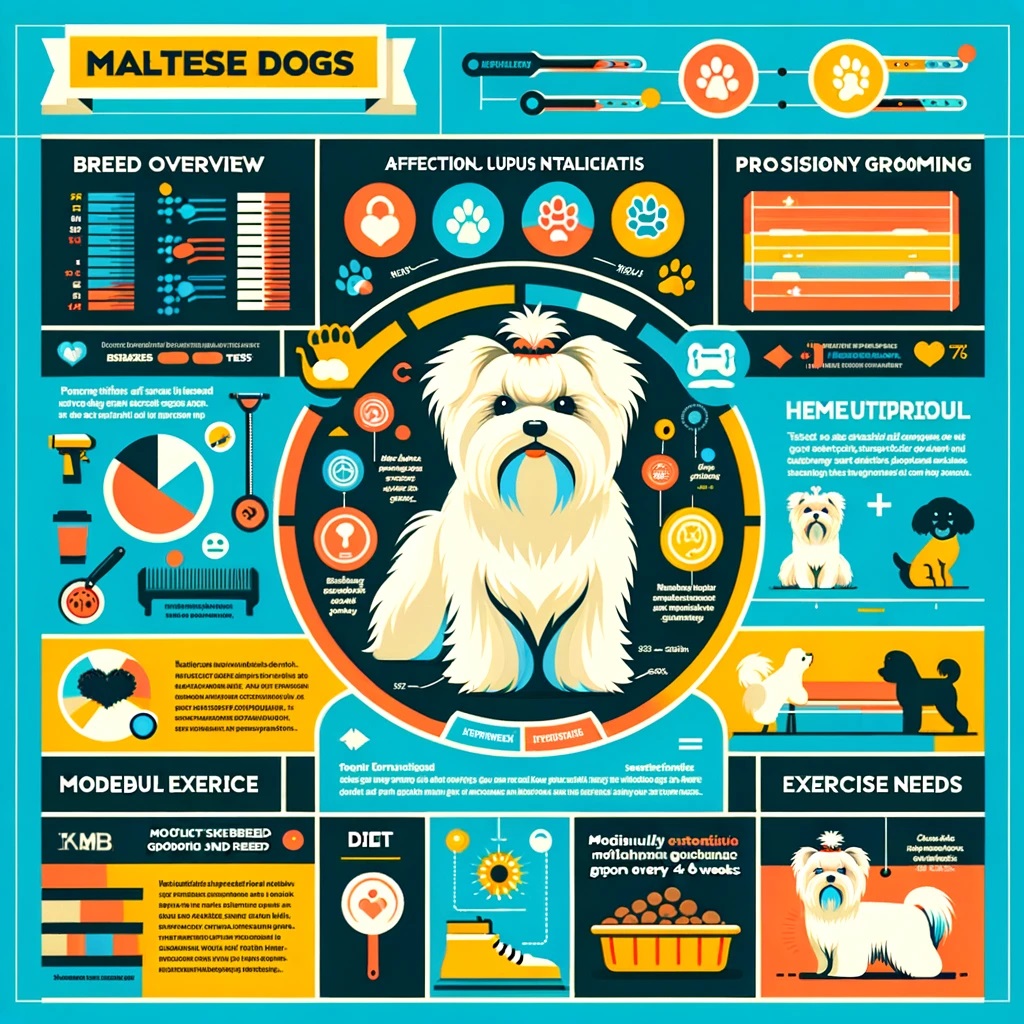
The Maltese dog, known for its luxurious white coat and charming demeanor, boasts an ancient lineage that spans thousands of years. Tracing its roots back to the central Mediterranean area, the breed is named after the island of Malta, though its historical presence also covers parts of Italy and the maritime cities along the Mediterranean Sea.
A Companion of Antiquity
Esteemed by the aristocracy and nobility, the Maltese has been a symbol of elegance and luxury throughout history. Ancient cultures, including the Greeks, Romans, and Egyptians, revered these dogs, as evidenced by artifacts and writings. The philosopher Aristotle even mentioned the Maltese in his writings around 370 B.C., referring to it by its ancient name, “Canis Melitaeus,” and praising its perfect proportions.
A Muse for Artists
Throughout the ages, the Maltese have been a frequent subject in art and literature, often depicted as a cherished companion of the elite. Their portrayal in Renaissance paintings and Roman mosaics attests to their enduring appeal and status.
A Breed Refined
Over centuries, the Maltese’s distinctive features have been carefully preserved and refined. Breeders across Europe, particularly in England in the 19th century, dedicated themselves to enhancing the breed’s characteristics, leading to the Maltese we know and love today.
Temperament
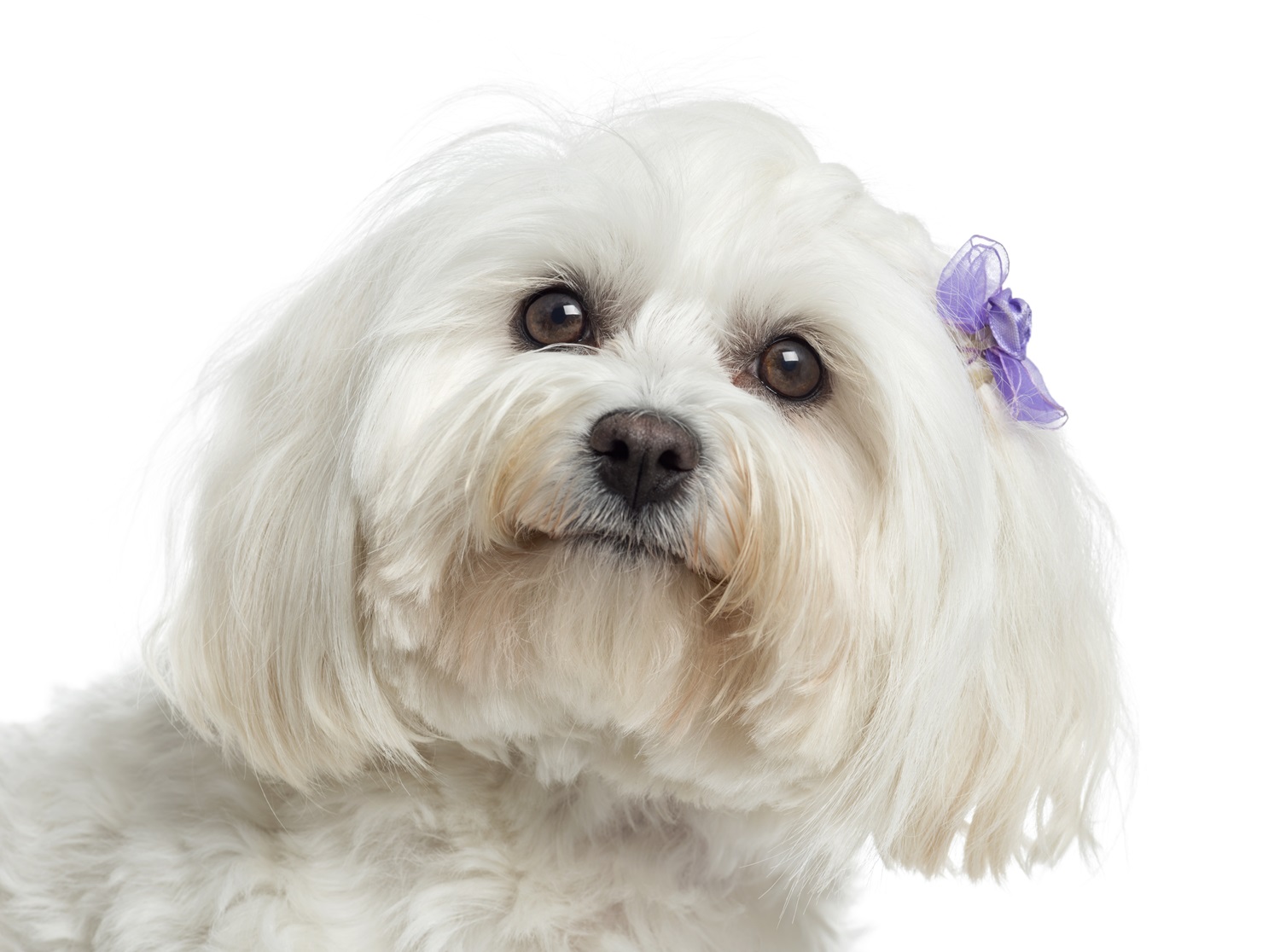
The Maltese dog is a bundle of joy and affection, making it a beloved companion worldwide. Despite its petite size, this breed has a vibrant personality that shines through in various ways.
Affectionate and Loyal
Maltese dogs are known for their deep bond with their owners. They thrive on interaction and affection, often following their favorite humans from room to room. Their loyalty and loving nature make them excellent companions, particularly for those who can spend a lot of time with their pets.
Social and Friendly
With a friendly disposition, Maltese dogs generally get along well with other dogs and even cats, especially when socialized from a young age. They enjoy the company of people, often greeting guests with enthusiasm and a wagging tail.
Intelligent and Trainable
Don’t let their cute appearance fool you; Maltese dogs are quick learners. They respond well to positive reinforcement training, making them stars in obedience and agility tasks. Their intelligence also means they’re adept at picking up on their owners’ emotions, offering comfort when needed.
Playful and Energetic
Maltese dogs possess a playful energy that belies their small stature. They love engaging in play, whether it’s with toys, puzzles, or interactive games with their owners. This playfulness, combined with their intelligence, means they need mental stimulation to stay happy.
Vocal
Maltese dogs can be quite vocal, using their bark to alert you to visitors or anything unusual. While not excessively yappy, their alert nature makes them good little watchdogs.
Grooming
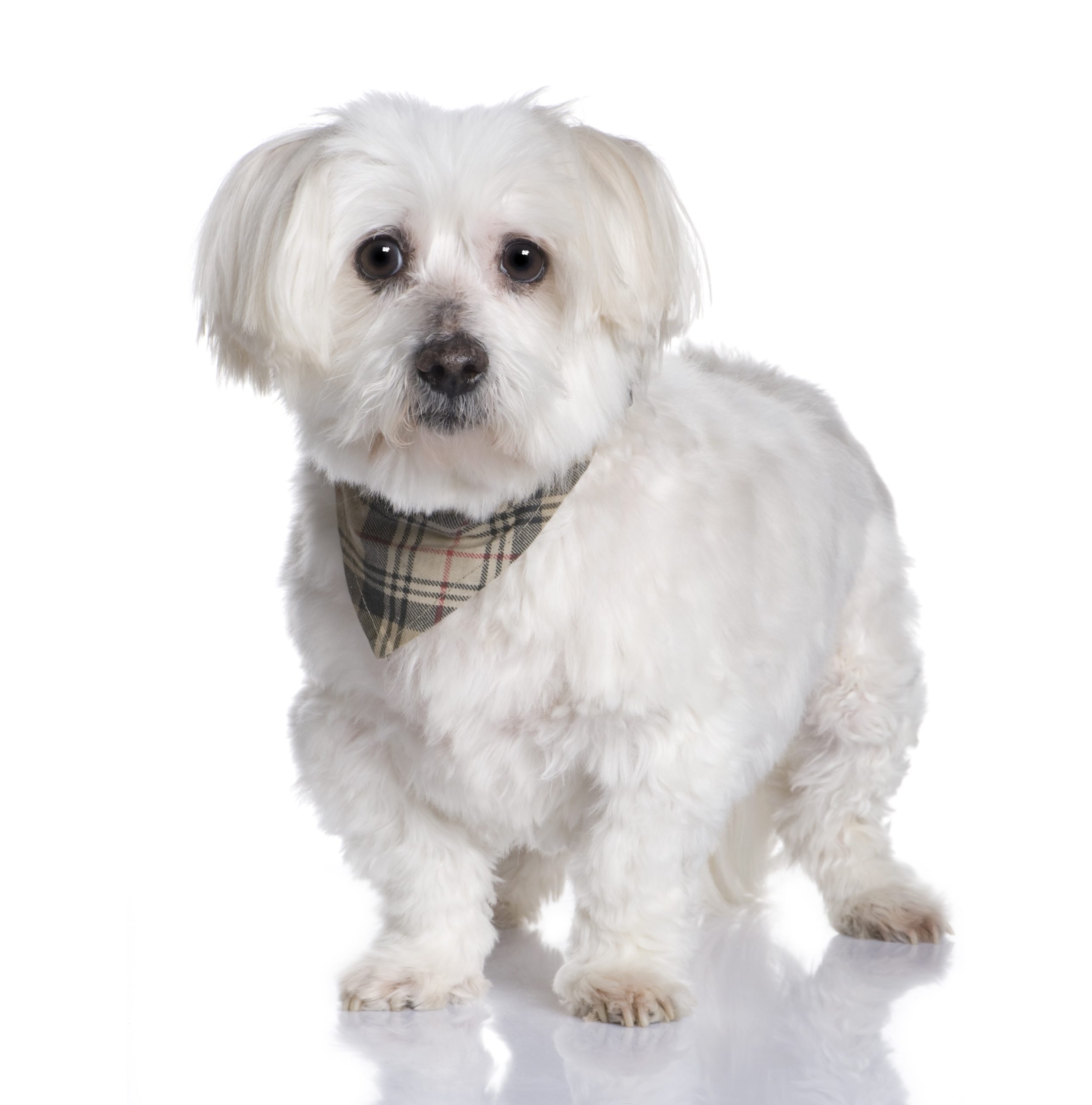
Grooming a Maltese dog is an essential part of their care, keeping their stunning white coat in pristine condition. Despite their luxurious appearance, maintaining a Maltese coat is manageable with a consistent grooming routine.
Coat Care
Brushing
Daily brushing is crucial to prevent mats and tangles in their silky fur. Use a soft bristle brush or a stainless steel comb to gently work through their coat, paying extra attention to areas prone to knotting, like behind the ears and under the legs.
Bathing
Bathe your Maltese every 3 to 4 weeks using a gentle dog shampoo. Regular baths help keep their coat white and remove any dirt or debris.
Conditioning
A leave-in conditioner or detangling spray can help keep their fur soft and manageable, making daily brushing easier.
Eye and Ear Care
Eyes
Maltese are prone to tear staining. Wipe around their eyes daily with a soft, damp cloth to prevent stains and keep the area clean.
Ears
Check their ears weekly for signs of wax buildup, irritation, or infection. Clean gently with a vet-approved ear cleaner.
Nail Trimming and Dental Care
Nails
Trim your Maltese’s nails regularly to prevent discomfort while walking. If you can hear their nails clicking on the floor, it’s time for a trim.
Teeth
Brush their teeth several times a week with dog-specific toothpaste to promote oral health and prevent bad breath.
Professional Grooming
Consider visiting a professional groomer every 4 to 6 weeks for a trim, especially if you prefer keeping your Maltese in a shorter, “puppy cut” style, which can be easier to maintain.
Professional groomers can also provide services like anal gland expression and thorough ear cleaning, ensuring your Maltese is healthy and comfortable.
Diets
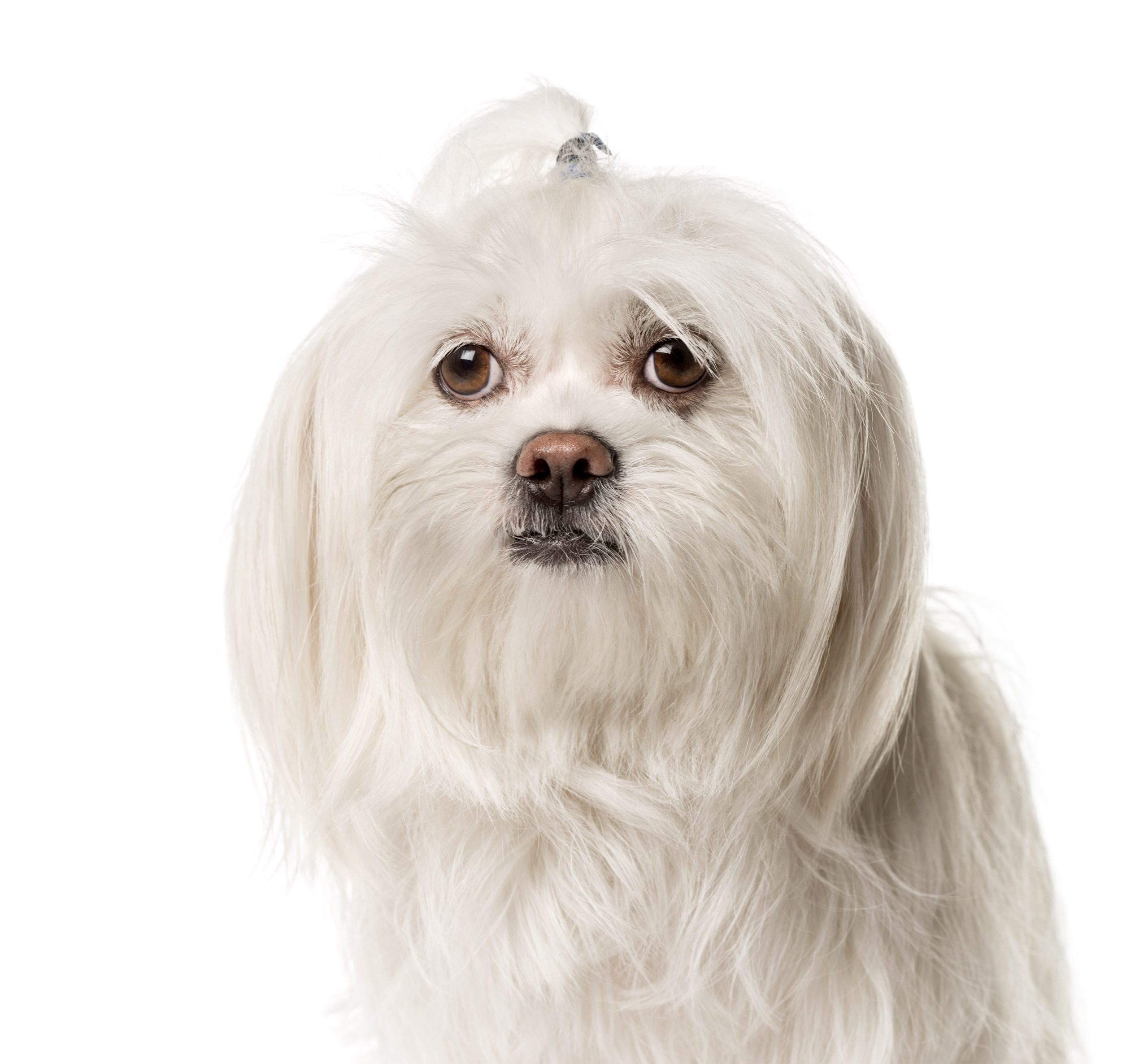
A well-balanced diet is crucial for keeping your Maltese dog healthy, energetic, and happy. These small dogs have specific nutritional needs that must be met to maintain their health, vitality, and the quality of their luxurious coats. Here’s what you need to know about feeding your Maltese:
Quality Food
Type
High-quality commercial dog food designed for small breeds is ideal, as it contains the right balance of nutrients for their size and energy level. You can choose between dry kibble, wet food, or a combination of both, depending on your dog’s preference and dietary needs.
Ingredients
Look for foods with high-quality protein sources (like chicken, turkey, or fish) as the first ingredient. A diet rich in protein supports muscle health, while the right balance of omega fatty acids contributes to a shiny, healthy coat.
Portion Control
Feeding Schedule
Maltese dogs benefit from being fed two small meals a day instead of one large meal. This helps prevent overeating and maintain their metabolism.
Amount
Follow the feeding guidelines on the dog food package, adjusted for your Maltese’s activity level, age, and weight. Overfeeding can lead to obesity, a common problem in small breeds.
Supplements
When Necessary
Some Maltese may benefit from supplements like omega-3 fatty acids for coat health or probiotics for digestive health. Always consult your vet before adding supplements to your dog’s diet.
Fresh Water
Accessibility
Ensure your Maltese has access to fresh, clean water at all times. Hydration is essential for their overall health.
Special Dietary Considerations
Sensitive Stomachs
Maltese dogs can have sensitive digestive systems. It’s important to introduce new foods gradually and monitor for any signs of upset, such as diarrhea or vomiting.
Dental Health
Due to their small jaws, Maltese can be prone to dental issues. Including dental chews or toys can help keep their teeth clean and healthy.
FAQs
1: How big do Maltese dogs get?
Maltese dogs are small, typically weighing up to 7 pounds and standing about 7-9 inches tall at the shoulder.
2: Are Maltese dogs good for families?
Yes, Maltese dogs are great with families. They’re affectionate and can do well with children who are gentle with them.
3: Do Maltese dogs shed a lot?
Maltese dogs are known for minimal shedding, making them a good choice for people with allergies.
4: How often should I groom my Maltese?
Daily brushing is recommended to keep their coat free of mats and tangles, with professional grooming every 4-6 weeks.
5: What health issues are common in Maltese dogs?
Maltese can be prone to dental issues, patellar luxation, and certain eye conditions.
6: Can Maltese dogs live in apartments?
Absolutely! Their small size and moderate energy level make them perfect for apartment living.
7: How long do Maltese dogs live?
Maltese dogs have a long lifespan, often living 12–15 years with proper care.
8: Are Maltese dogs easy to train?
Yes, they’re intelligent and eager to please, making them generally easy to train. Positive reinforcement works best.
9: What kind of exercise does a Maltese need?
Maltese dogs require moderate exercise. Daily walks and play sessions are sufficient to keep them happy and healthy.
110: Do Maltese get along with other pets?
Yes, Maltese usually get along well with other dogs and even cats, especially if they’re raised together.
References and Further Reading
American Kennel Club (AKC) – Maltese Breed Information: The AKC offers comprehensive details about the Maltese breed, including its history, care, and health. Visit AKC’s Maltese Page
The Maltese Club: As a breed-specific club, it provides valuable insights into the care, breeding, and showing of Maltese dogs. Explore The Maltese Club
PetMD – Maltese: Offers extensive health, diet, and care tips for Maltese dog owners, backed by veterinary expertise. Read about Maltese on PetMD
Maltese Dog Rescue Groups: Consider adopting a Maltese through a rescue organization dedicated to the breed. American Maltese Association Rescue

